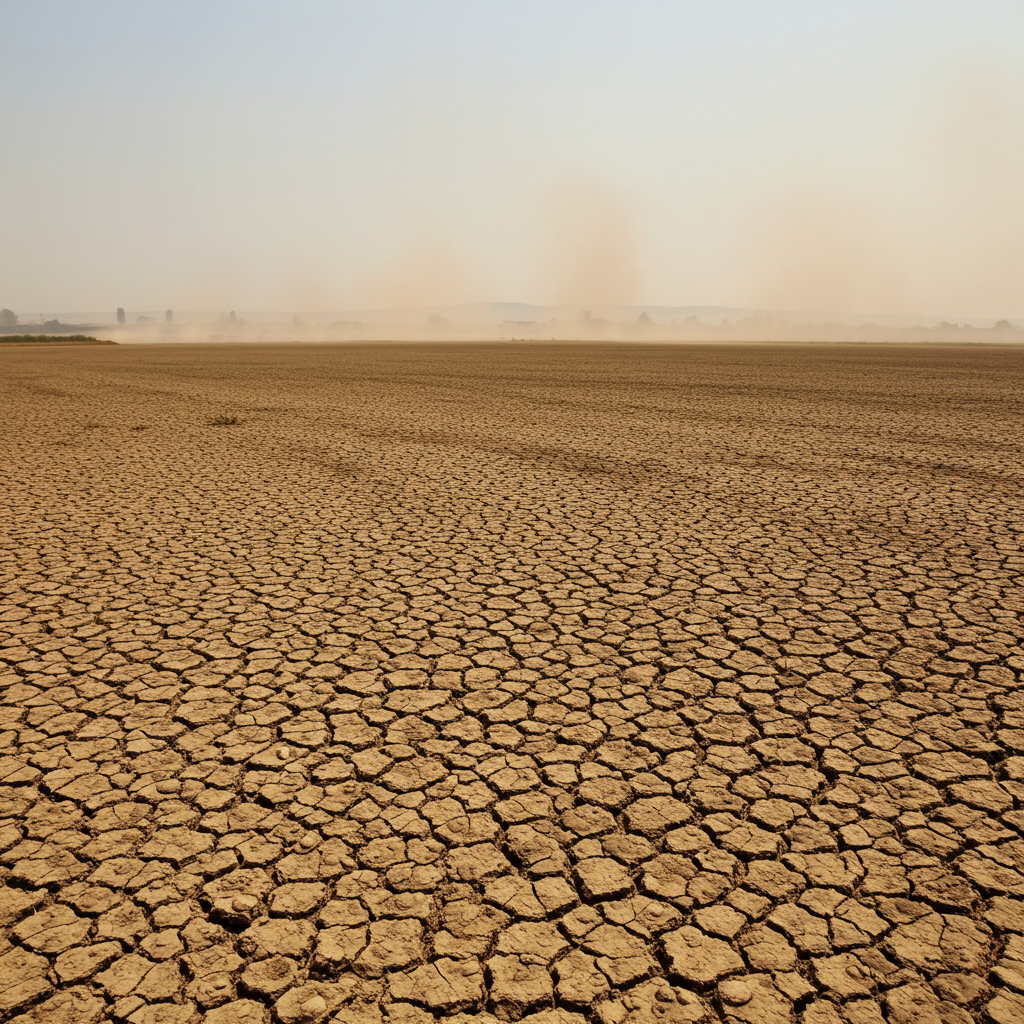Europe is battling a severe and scorching heatwave, pushing temperatures past 40°C across multiple nations. This intense heat isn’t just uncomfortable; it’s proving deadly, claiming multiple lives and fueling dangerous wildfires. The continent faces unprecedented conditions, highlighting the urgent need for adaptation and climate action.
The Human Toll: Fatalities Across the Continent
The extreme heat and its related consequences have led to a tragic loss of life across several European countries. At least six additional deaths have been reported, adding a somber layer to the ongoing crisis. The fatalities underscore the significant risks high temperatures pose to public health and safety.
Tragedy in Spain: Wildfire Claims Lives
A devastating wildfire near the town of Coscó in Spain’s Catalonia region turned deadly. Two farmers became trapped by the fast-spreading flames. Authorities confirmed a farm worker had desperately sought help from his employer, but they could not escape the inferno. The fire rapidly consumed a vast area, estimated at up to 6,500 hectares. The victims were later identified as the 32-year-old farm owner and a 45-year-old worker. This incident is a stark reminder of the heatwave’s potential to escalate into uncontrollable natural disasters.
Deaths Reported in Italy
Italy has also recorded several heat-related fatalities. On the island of Sardinia, where temperatures have soared above 40°C, two men died after falling ill on beaches. A 75-year-old man succumbed in Budoni, and a 60-year-old man became sick and passed away on the beach of Lu Impostu in San Teodoro. Elsewhere in Italy, an elderly man in his 80s died of heart failure after entering a hospital in Genoa. The heatwave is impacting even those not directly exposed to the outdoors. Two construction workers in the province of Vicenza also suffered severe heat-related illness while working underground in a hole, requiring hospitalization. One worker was reported to be in a coma.
Fatal Incidents in France
In France, a heartbreaking incident occurred at the Palace of Versailles near Paris. A 10-year-old American girl collapsed and died while visiting the royal estate with her parents. She reportedly collapsed in the courtyard around 6:00 PM local time. Despite immediate efforts by security and emergency services, she was pronounced dead an hour later. France’s ecological transition minister had previously confirmed two other heat-related fatalities in the country. Over 300 people reportedly received emergency care from firefighters for heat-related issues on a single day, indicating the widespread impact on public health services.
Record-Breaking Temperatures Grip Europe
The current heatwave is not an isolated event; it builds on a pattern of extreme heat that has already set records. This exceptional warmth is a defining feature of the summer across the continent.
June Heat Records Shattered
June 2024 saw unprecedented temperatures in several nations. Both Spain and England registered their hottest Junes since official records began. Spain’s national weather service, Aemet, stated that the country’s average temperature in June, 23.6°C (74.5°F), “pulverised records,” surpassing typical averages seen even in the hottest months of July and August. Similarly, France experienced its second-hottest June since records started in 1900, just slightly cooler than June 2023.
Persistent Extreme Conditions
The heat isn’t relenting. Forecasts for southern Spain included predicted temperatures of 41°C in cities like Córdoba. Even overnight, relief is minimal, with temperatures remaining as high as 28°C in towns like Osuna. France continues to face extreme conditions, with four departments – Aube, Cher, Loiret, and Yonne – remaining on the highest red alert level for heat, according to Météo-France. These persistent high temperatures, day and night, significantly increase health risks.
Heat Fuels Wildfire Crisis
Beyond direct health impacts, the scorching heatwave is a major contributor to the outbreak and rapid spread of wildfires. Dry conditions and high temperatures create a volatile environment, turning vegetation into potential fuel.
Fires Rage in Greece
Greece is currently grappling with multiple wildfires that have prompted emergency evacuations. Authorities have issued warnings about a very high fire risk across many regions, including Attica, Crete, parts of the Peloponnese, and various Aegean islands. Near the coastal village of Vourvourou in Halkidiki, a fast-moving blaze tore through highly flammable pine forest. This forced local residents and campers to flee for safety. Firefighters, aided by ground teams and aerial units, are battling the flames across challenging, steep terrain, while the area has also experienced power cuts.
Wildfires Continue in Spain
The deadly wildfire in Catalonia is not the only fire risk in Spain. The combination of record heat and dry conditions means other areas remain vulnerable. The scale of the Catalonia fire, engulfing 6,500 hectares, demonstrates how quickly fires can spread and become uncontrollable during such intense heatwaves. These fires stretch emergency services and pose immediate threats to lives and property.
Vulnerability and Risk Factors
Experts highlight that the heatwave’s impact is not felt equally across the population. Certain groups face significantly higher risks from extreme temperatures. Understanding these vulnerabilities is crucial for targeted support and prevention efforts.
Age and Health Impacts
According to Dimple Rana, a heat and microclimate specialist, there is a significant link between heat-related impact and age. She noted that in regions like the UK, most heat-related deaths occur among older adults. Very young children, particularly those under the age of five, are also identified as being highly vulnerable. Their bodies regulate temperature differently, making them more susceptible to heat stress.
Socioeconomic Disparities
Vulnerability also has a socioeconomic dimension. Ms. Rana pointed out that individuals on lower incomes often undertake more manual labor. This type of work frequently requires them to be outdoors or in inadequately cooled environments, directly exposing them to higher temperatures for longer periods. Such exposure increases their risk of heat-related illness or death.
The Urban Heat Island Effect
Cities present a unique challenge during heatwaves due to the “urban heat island effect.” The World Meteorological Organization (WMO) explains that urban environments become significantly warmer than surrounding rural areas during hot periods. This is due to the abundance of heat-absorbing surfaces like pavement and buildings, along with heat generated by vehicles and machinery. This additional heat within cities exacerbates heat stress and can tragically increase mortality rates during heatwaves. (Learn more about adapting cities to climate change).
Climate Change Connection
International climate agencies and experts are increasingly clear: the intensity and frequency of extreme heat events like the one currently gripping Europe are directly linked to human-induced climate change.
Expert and Agency Confirmation
The UN’s climate agency, the World Meteorological Organization (WMO), explicitly stated that human-induced climate change means “extreme heat is becoming more frequent and intense.” The UN’s Intergovernmental Panel on Climate Change (IPCC) echoes this, projecting that extreme hot weather will occur more often and become even more intense as the planet continues to warm. Experts like Dimple Rana stress the dual necessity of reducing greenhouse gas emissions (mitigation) and developing strategies to adapt to the climate changes already happening.
Future Projections
The scientific consensus indicates that without significant global action to reduce emissions, the frequency and severity of such deadly heatwaves will continue to increase. This makes understanding current impacts and implementing protective measures critically important for public safety in the years ahead.
Infrastructure Strain and Other Impacts
The heatwave’s consequences extend beyond human health and wildfires. Intense heat places enormous strain on infrastructure. In Italy, for example, surges in air conditioning use combined with overheating underground electrical cables led to power outages in areas including Florence city centre and half of Bergamo. These blackouts affected homes, hotels, shops, and even essential services like ATMs and alarm systems, sometimes lasting for several hours. This highlights how extreme weather disrupts daily life and infrastructure reliability.
Frequently Asked Questions
What areas of Europe are most affected by the deadly heatwave?
The current severe heatwave is impacting multiple countries across Europe. The article specifically mentions significant impacts, including fatalities and extreme temperatures, in Spain, Italy, and France. Additionally, Greece is facing severe wildfires linked to the heat. Temperatures have exceeded 40°C in many of these regions, including parts of Spain and the island of Sardinia in Italy.
Beyond deaths, what other major impacts is the European heatwave causing?
In addition to tragically causing heat-related deaths, the heatwave is fueling dangerous wildfires, notably in Spain and Greece, leading to emergency evacuations. The intense heat also puts severe strain on infrastructure, causing issues like power outages, as reported in Italian cities like Florence and Bergamo, due to increased demand and overheating equipment. The extreme temperatures are also breaking historical records, including the hottest Junes on record for Spain and England.
Who is most vulnerable to heatwave dangers?
Experts highlight several groups at higher risk during heatwaves. Older adults and very young children (under five) are particularly vulnerable due to differences in how their bodies regulate temperature. Individuals on lower incomes who perform manual labor, often outdoors, face increased exposure risk. People in cities are also more susceptible due to the “urban heat island effect,” where urban areas trap more heat, leading to higher temperatures than surrounding rural areas.
Conclusion
The deadly heatwave gripping Europe serves as a powerful and tragic illustration of the growing impacts of extreme weather events. Fatalities have occurred across Spain, Italy, and France, exacerbated by conditions that fuel devastating wildfires and strain critical infrastructure. Experts and international bodies like the WMO and IPCC confirm the clear link between the increasing frequency and intensity of these heatwaves and human-induced climate change. As the planet continues to warm, understanding vulnerability and implementing robust adaptation strategies alongside urgent emission reductions becomes paramount to protecting lives and communities from future heat crises.




